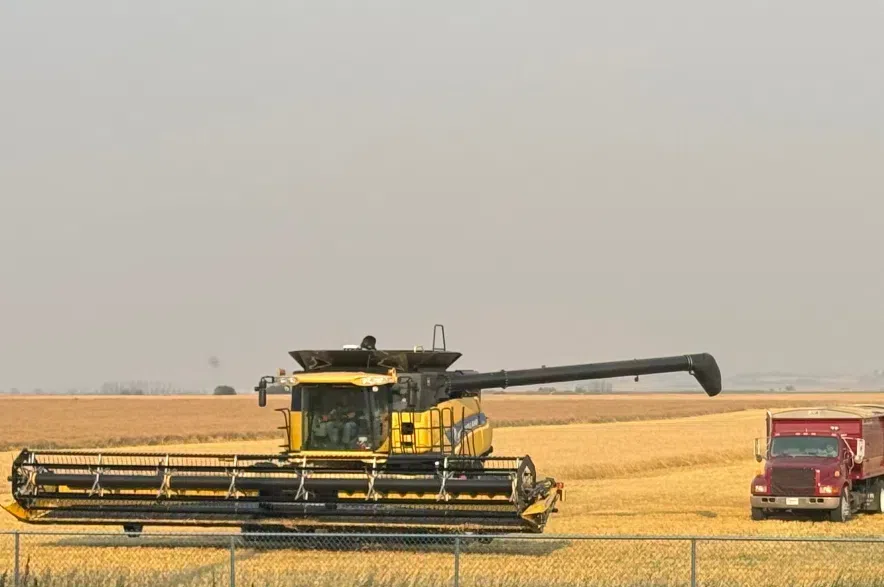Harvest is 12 per cent complete across the province, but is still lagging behind the five- and 10-year averages.
According to the weekly crop report from the Saskatchewan Ministry of Agriculture, which covered the week ending on Monday, harvest is in full swing in many parts of the province, though harvest has been stalled in other regions by rainfall and humid conditions.
Read more:
- NDP repeats calls for action committee on drought relief
- Sask. government appeals to feds after farm equipment hit by tariffs
- Above-average temperatures, dry conditions welcome as harvest approaches
The southwest is furthest ahead, with harvest 23 per cent complete, followed by the southeast at 14 per cent. Harvest was 11 per cent complete in the east and west-central regions, and combining has begun in only a few areas in northern Saskatchewan.
“Over half of winter cereals are in the bin with harvest progress for winter wheat at 70 per cent and fall rye at 66 per cent. There was also a notable increase in harvested pulse acres from last week, with 45 per cent of peas and 35 per cent of lentils now complete,” the ministry noted in its report.
“Additionally, more producers are starting to harvest their spring cereals with triticale, barley and durum progress sitting at 42 per cent, 17 per cent and 13 per cent, respectively. The first acres of spring wheat, oats and chickpeas are coming off, but progress is minimal at this point.”
Across Saskatchewan winter wheat was graded at 23 per cent 1 Canada Western (CW), 65 per cent 2 CW, 11 per cent 3 CW and one per cent CW Feed, which the ministry noted is lower than the 10-year average.
Fall rye was graded at 30 per cent 1 CW, 56 per cent 2 CW, 13 per cent 3 CW and one per cent sample, which is also lower than the province’s 10-year average.
Many parts of Saskatchewan were very dry in the week ending Monday, the ministry noted, which helped crops mature and pushed harvest ahead. But in other areas, thunderstorms brought significant amounts of rainfall, notably in the Nipawin area, which received 42 mm of precipitation in the week covered by the report.
“Despite some rainfall, provincial topsoil moisture levels fell slightly last week, but conditions remain high relative to earlier this growing season,” the ministry added.
Bertha armyworms in canola fields were the largest source of crop damage during the week ending on Monday, the ministry added, though the damage was “fairly minor and not widespread as many infested fields have been sprayed.” Grasshoppers and wildlife also caused some crop damage, along with strong winds and hail in areas that saw thunderstorms during the past week.
“Finally, high temperatures paired with dry conditions caused minor damage to later-seeded crops in a few areas that have not reached maturity yet,” the ministry said.
While producers are working to get their crops harvested, drivers were reminded that there will be plenty of farm equipment moving around on Saskatchewan’s roads and highways. The ministry asked drivers to use patience and caution around any large equipment, and asked producers to be mindful of potential fire risks in dry fields.











